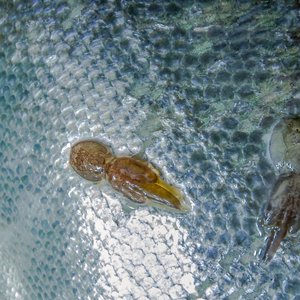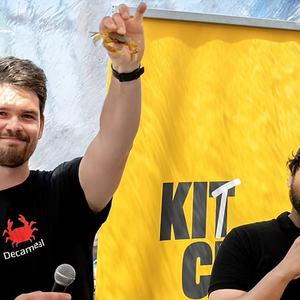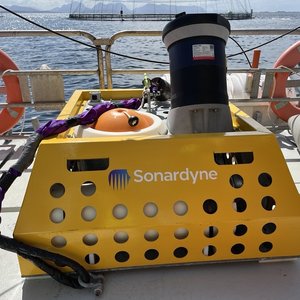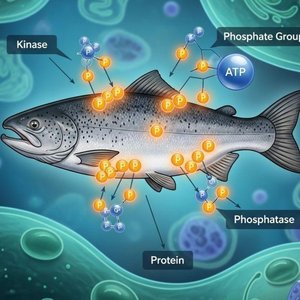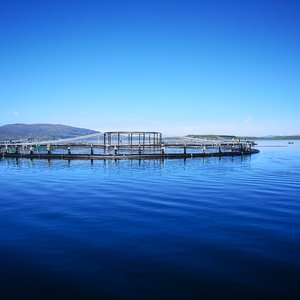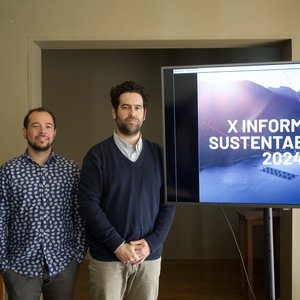The Spanish Institute of Oceanography (IEO) has for the first time worldwide closed the life cycle of Atlantic bluefin tuna (Thunnus thynnus) in captivity.
This achievement is a result of the various projects and initiatives that researchers Aurelio Ortega and Fernando de la Gándara developed at the Murcia Oceanographic Centre IEO over the last ten years, with the collaboration of the Autonomous Community of the Region of Murcia and several companies the sector, mainly those of Grupo Ricardo Fuentes e Hijos.
The tuna broodstock was established from eggs collected in 2011, 2012, and 2013 from a cage managed by the company Caladeros Mediterranean SL, belonging to the group Ricardo Fuentes e Hijos, in the Bay of Gorguel (Cartagena). These eggs were transported to the Marine Culture Experimental Plant of Mazarrón Murcia Oceanographic Centre, where they hatched and were raised to juveniles sized 3-5 grams. They were later transported to cages in the premises of that company and fattened in the framework of a CDTI project until the end of 2014.
In 2015, the company Fortuna Mare SL took charge of them and, in early 2016, they were assigned the IEO and transported in May to Tuna Graso, Ricardo Fuentes e Hijos Group, located in the aquaculture area of San Pedro del Pinatar. To collect possible eggs, a collaborative operation between the Fisheries Service of the Autonomous Community of Murcia companies Taxon SL and Piscifactorías Albaladejo and the IEO was established.
On the night of July 1, some 50,000 fertile eggs were collected inside the cage. They were immediately transported to IEO facilities in Mazarrón where they hatched and researchers are now proceeding with larviculture.
This milestone will enable faster development of integrated aquaculture of this iconic species.
Learn more about the Spanish Institute of Oceanography (IEO)



